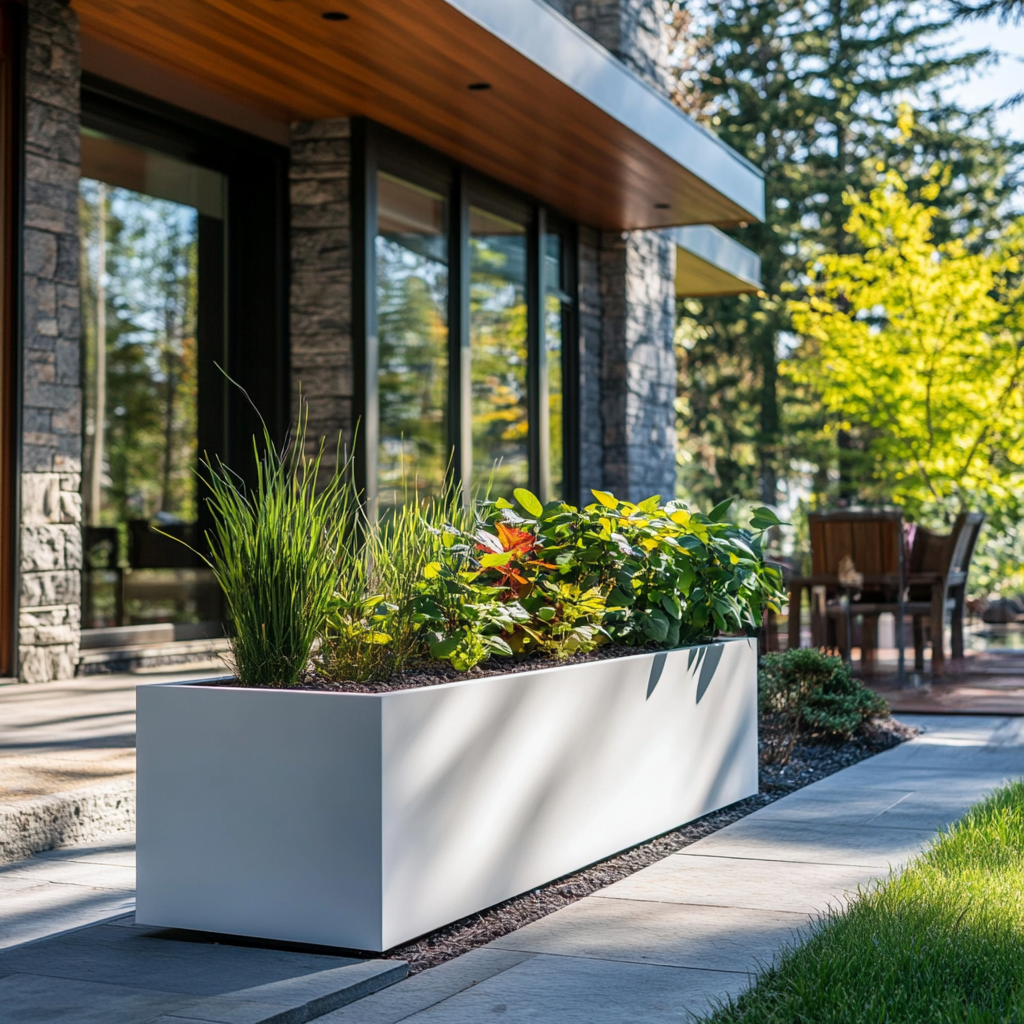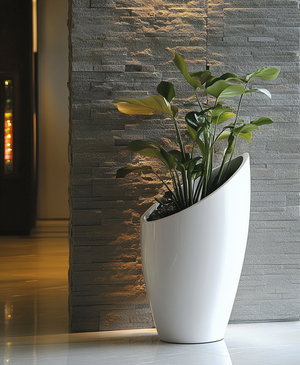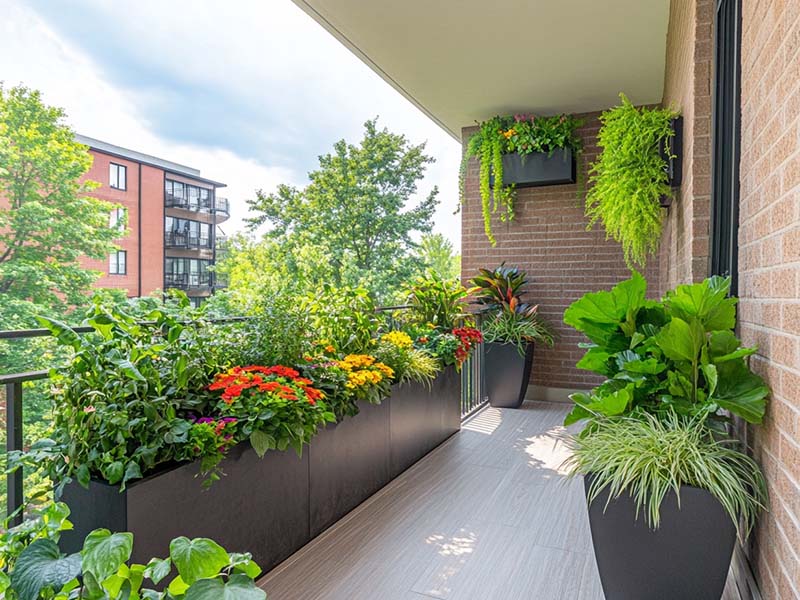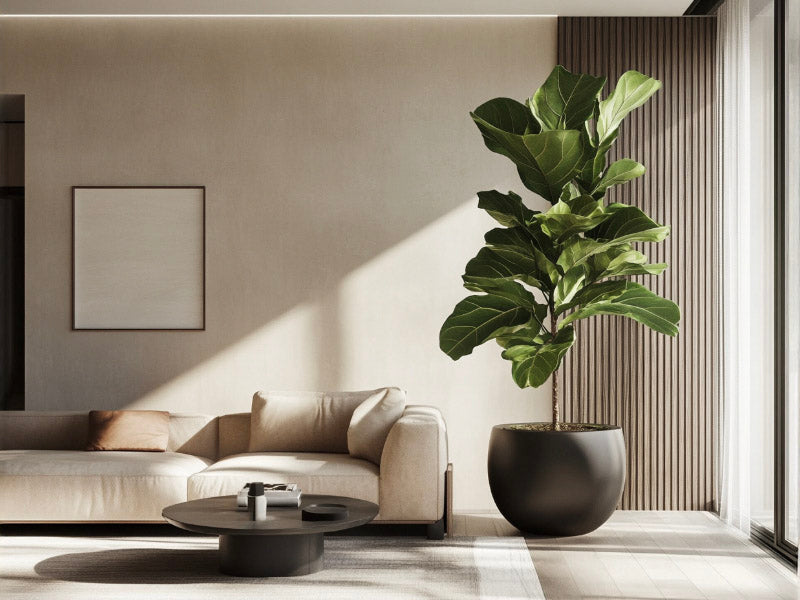Planters, often overlooked in traditional landscaping, offer a versatile and dynamic way to enhance outdoor spaces. These containers can add a touch of color, texture, and structure to any garden, patio, or balcony. By strategically placing planters, you can create stunning visual displays, optimize space, and even cultivate edible gardens.
In this article, we will explore the benefits of landscaping with planters, guide you through the process of choosing the right containers, and provide creative ideas for incorporating them into your outdoor design.
Benefits of Landscaping with Planters
Outdoor planters provide a flexible and adaptable way to enhance your garden or patio. These containers provide numerous benefits, including:
- Versatility and Mobility: Planters offer unmatched flexibility in landscaping. They can be easily moved to accommodate seasonal changes, adjust to evolving design preferences, or adapt to new plant requirements. This mobility allows for frequent experimentation and customization of outdoor spaces.
- Seasonal Flexibility: Garden planters provide a convenient way to showcase seasonal blooms and foliage. By rotating plants throughout the year, you can maintain a vibrant and ever-changing garden. For instance, in the spring, plant colorful annuals and bulbs; in the summer, feature lush tropical plants; and in the fall, display colorful foliage and autumn-themed arrangements.
- Aesthetic Appeal: Planters are a powerful tool for enhancing the aesthetic appeal of outdoor spaces. They can add a touch of elegance, create focal points, and provide visual interest. By selecting planters with unique shapes, sizes,and materials, you can create a personalized and visually striking landscape.
- Space Optimization: Planters are particularly beneficial for small gardens, balconies, or patios. They allow you to maximize limited space by growing plants vertically or in compact arrangements. Additionally, planters can be used to divide larger spaces into smaller, more manageable areas.
Choosing the Right Planters
When selecting planters for your landscape, consider the following factors:
Material Options
- Ceramic: Known for their durability, elegance, and wide range of colors and finishes, ceramic planters are a popular choice. However, they can be heavy and prone to cracking if not handled carefully.
- Terracotta: Terracotta planters offer a rustic and earthy aesthetic. They are porous, which can help regulate soil moisture. However, terracotta can become stained or cracked over time.
- Fiberglass: High-quality fiberglass planters are lightweight, durable, and available in a variety of shapes and sizes. They are resistant to cracking and fading, making them a popular choice for outdoor use.
- Plastic: Plastic planters are affordable, lightweight, and come in a wide range of colors and styles. They are easy to maintain but may not be as durable or aesthetically pleasing as other materials.
- Metal: Metal planters, such as those made of wrought iron or aluminum, offer a sleek and modern look. They are durable but can rust if not properly maintained.
Size and Shape
The size and shape of a planter should be chosen based on the plant type, desired aesthetic, and available space. Here are some general recommendations:
|
Plant Type |
Planter Size |
|
Annuals and perennials |
Small to medium |
|
Shrubs |
Medium to large |
|
Trees |
Large |
|
Vines |
Hanging baskets or wall-mounted planters |
Creative Landscaping Ideas with Planters
Planters offer a wealth of creative possibilities for landscaping. Beyond their practical benefits of adding color, texture, and structure, they can be used to create unique and visually stunning designs. Here are some innovative ideas to inspire your outdoor space:
Vertical Gardens
Break free from traditional horizontal gardening and embrace the vertical dimension. Wall-mounted planters or hanging baskets are ideal for creating stunning vertical displays. This is not only a space-saving solution but also adds a dramatic and eye-catching element to your landscape. Imagine a cascading wall of vibrant flowers or a lush green tapestry of ferns - those are some of the best outdoor planter ideas that will transform your garden space into a peaceful oasis.

Mixed Height Arrangements
If you’re looking for unique tall planter ideas, you can introduce depth and dimension to your garden by combining planters of varying heights. Tall, narrow planters can be used as focal points, while shorter planters can fill in gaps and create a balanced composition. Experiment with different combinations of plants and planters to achieve a harmonious and visually interesting effect.
Color-Themed Gardens
Use planters to create vibrant and thematic gardens. For a bold and striking look, plant only one color of flower in each planter. Alternatively, create a rainbow of colors by using a variety of hues in different planters. It’s one of the classic planter ideas for patio, garden or balcony that can be a visually stimulating way to transform your outdoor space.

Seasonal Displays
Keep your garden fresh and exciting throughout the year by rotating plants and flowers in your planters. In the spring, plant colorful annuals and bulbs. In the summer, showcase lush tropical plants. In the fall, display colorful foliage and autumn-themed arrangements. This seasonal approach will ensure that your garden always looks its best.

Functional Dividers
Planters can be used as natural dividers to separate different areas of your garden or patio. This can create a sense of organization and privacy, while also adding visual interest. For example, place a row of planters along a pathway to define a boundary or use planters to create a cozy seating area.

Themed Planting
Create themed gardens, such as tropical, desert, or cottage gardens, by arranging plants in small or large planters that complement the theme. A tropical garden might feature palm trees, hibiscus, and colorful orchids in large, terracotta planters. A desert garden could include cacti, succulents, and drought-tolerant plants in rustic, stone planters. A cottage garden might feature English roses, lavender, and cottage-style annuals in charming, ceramic planters.

Entrance Beautification
Looking for porch or front yard planter ideas to make a lasting impression on visitors? Enhance the entrance to your home with thoughtfully placed planters. Symmetrical arrangements of matching planters can create a formal and elegant look, while asymmetrical arrangements can add a touch of whimsy and personality. Experiment with different combinations of plants and planters to find the perfect design for your front porch or entryway.

Balcony and Small Space Ideas
Even if you have limited outdoor space, you can still create a beautiful garden. Compact planters, hanging baskets, and vertical gardens are ideal for balconies and small patios. Choose plants that thrive in containers and are suitable for your climate.

Edible Gardens
Grow fresh herbs, vegetables, and small fruit plants in planters to create an edible garden. This is a practical and rewarding way to enjoy homegrown produce and add a functional element to your landscape. Choose plants that are suitable for container gardening and provide the necessary care and maintenance.

Water Features with Planters
Searching for garden or backyard planter ideas involving water features? Incorporate planters into water features to create a unique and visually stunning focal point. Place planters around a pond or fountain, or use them to create a cascading waterfall. The combination of plants and water can create a peaceful and relaxing atmosphere.
Maintenance Tips for Planter Landscapes
To ensure the health and beauty of your planter landscape, it's essential to provide proper care and maintenance. Here are some key tips:
Watering and Drainage
- Proper Drainage: Ensure that your planters have adequate drainage holes to prevent root rot. Without proper drainage, excess water can accumulate and suffocate the roots.
- Consistent Watering: Water your plants regularly, but avoid overwatering. Check the soil moisture by sticking your finger about an inch deep. If it feels dry, it's time to water.
- Adjust Watering: The frequency of watering will depend on factors such as plant type, container size, and weather conditions. Adjust your watering schedule accordingly.
Soil and Fertilization
- Well-Draining Soil: Use a well-draining soil mix specifically designed for containers. This will help prevent root rot and provide essential nutrients for plant growth.
- Regular Fertilization: Fertilize your plants regularly to replenish nutrients that are depleted over time. Use a balanced fertilizer that is suitable for the type of plants you are growing.
- Organic Options: Consider using organic fertilizers to promote healthy soil and reduce environmental impact.
|
Plant Type |
Recommended Soil Mix |
|
Annuals and Perennials |
Peat moss, perlite, compost |
|
Shrubs |
Peat moss, bark, perlite |
|
Trees |
Potting soil, perlite, compost |
|
Vines |
Peat moss, perlite, coco coir |
|
Succulents and Cacti |
Cactus and succulent mix (low moisture retention) |
|
Herbs |
Well-draining potting mix, enriched with compost |
|
Vegetables |
Vegetable garden mix or custom blend of peat moss, perlite, and compost |
Pruning and Plant Care
- Regular Pruning: Prune your plants as needed to maintain their shape, size, and health. Remove dead or damaged branches or leaves to encourage new growth and prevent disease.
- Deadheading: Deadhead spent flowers to promote continuous blooming and prevent the formation of seeds.
- Pest and Disease Control: Monitor your plants for signs of pests or diseases and take appropriate action to prevent or treat them.
Common Problems and Solutions
While landscaping with planters offers numerous benefits, it's important to be aware of potential challenges and how to address them. Here are some common problems you may encounter and their corresponding solutions:
- Overwatering: Symptoms of overwatering include yellowing leaves, root rot, and mushy stems. Reduce watering and ensure proper drainage.
- Root Rot: This fungal disease can be caused by overwatering or poor drainage. Remove affected plants and replant them in fresh, well-draining soil.
- Pests: Common pests that can affect container plants include aphids, spider mites, and mealybugs. Use natural or chemical pest control methods to eliminate infestations.
- Insufficient Sunlight: Many plants require adequate sunlight to thrive. Ensure your planters are placed in locations that receive the appropriate amount of sunlight for the specific plants you are growing.
Conclusion
Landscaping with planters offers a versatile and rewarding way to create beautiful and functional outdoor spaces. By carefully selecting planters, choosing the right plants, and providing proper care, you can transform your garden, patio, or balcony into a stunning oasis. Experiment with different ideas, enjoy the process, and share your experiences with others.






















Tony —
how to keep the plants from drying out too fast? I live in a pretty hot area, and I’m worried the planters will need constant watering